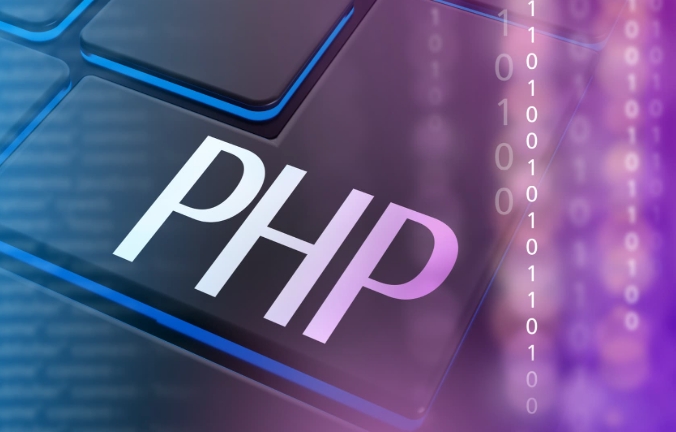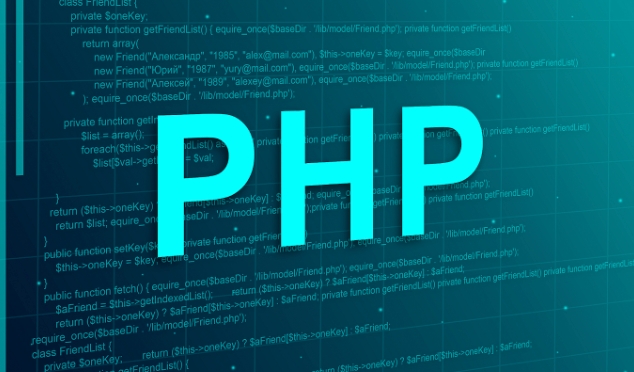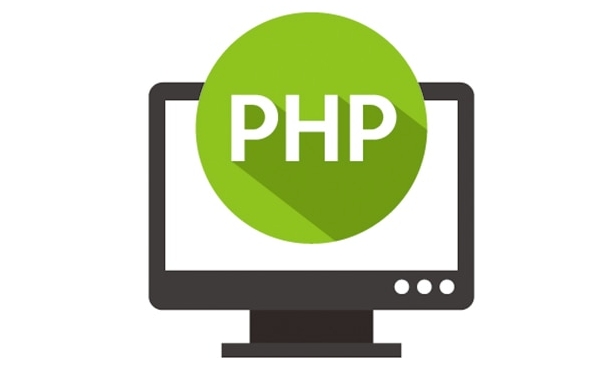 Backend Development
Backend Development
 PHP Tutorial
PHP Tutorial
 PHP beginner guide: Detailed explanation of local environment configuration
PHP beginner guide: Detailed explanation of local environment configuration
PHP beginner guide: Detailed explanation of local environment configuration
Jun 27, 2025 am 02:09 AMTo set up a PHP development environment, you need to select the appropriate tools and install the configuration correctly. ①The most basic PHP local environment requires three components: the web server (Apache or Nginx), PHP itself and database (such as MySQL/MariaDB); ② It is recommended that beginners use integration packages such as XAMPP or MAMP, which simplify the installation process. XAMPP is suitable for Windows and macOS. After installation, the project files are placed in the htdocs directory and accessed through localhost; ③MAMP is suitable for Mac users and supports convenient switching of PHP versions, but the free version has limited functions; ④ Advanced users can manually install them by Homebrew, and can achieve more flexible control in macOS/Linux systems through terminal commands; ⑤ Common precautions include ensuring that the port is not occupied, the PHP version matches project requirements, enabling necessary extensions, and setting permissions correctly. After the configuration is completed, the environment usually runs stably, which facilitates subsequent development and problem investigation.

Setting up a PHP development environment might seem daunting if you're just starting out, but it's actually straightforward once you understand the key components involved. You don't need to overcomplicate things—just get a few tools working together and you're good to go.

What do you really need for a PHP local environment?
A basic PHP setup requires three main pieces: a web server, PHP itself, and a database. The most common combo is Apache (or Nginx), PHP, and MySQL/MariaDB. These are often packaged together in tools that simplify installation.

- Apache or Nginx : Handles HTTP requests and serves your PHP files.
- PHP : Processes the actual PHP code and returns HTML to the browser.
- MySQL / MariaDB : Stores data for dynamic websites like blogs or user systems.
You can install each separately, but beginners usually benefit more from using an all-in-one package.
Option 1: Use XAMPP (great for Windows and macOS)
XAMPP is one of the easiest ways to get started. It bundles Apache, PHP, MySQL, and phpMyAdmin—all in one installer.

How to set it up:
- Download XAMPP from the official site (make sure it matches your OS).
- Run the installer and choose where to install it (default is fine).
- Start Apache and MySQL from the XAMPP control panel.
- Put your PHP files into the
htdocsfolder inside the XAMPP directory. - Access them via
http://localhost/your-folder-name.
A common mistake is trying to run XAMPP on a system where port 80 is already taken (like by Skype or IIS). If Apache doesn't start, check which app is using port 80 and either stop it or change Apache's port in the config.
Option 2: MAMP (another solid choice, especially for Mac users)
MAMP works similarly to XAMPP but is known for being smoother on macOS. It also lets you easily switch between PHP versions.
Key points when using MAMP:
- The default document root is
htdocsunder the MAMP folder, not system-wide/Applications. - To use localhost paths like
http://localhost:8888/myproject, place your project in the correct htdocs folder. - You can change the ports if needed (eg, to avoid using 8888 and go straight to port 80).
One thing to note: MAMP Free version has some limitations, so if you want advanced features like command-line access to PHP, you may want to look into the Pro version or another method.
Option 3: Manual setup with Homebrew (for macOS/Linux users who like control)
If you prefer more control and are comfortable with the terminal, installing PHP and related tools manually can be rewarding.
Basic steps:
- Install Homebrew if you haven't already (
/bin/bash -c "$(curl -fsSL https://raw.githubusercontent.com/Homebrew/install/HEAD/install.sh)") - Install PHP:
brew install php - Install MySQL:
brew install mysql - Start services:
brew services start mysqlandbrew services start php - Set up your document root and configure
php.inias needed
This gives you a cleaner, more modern setup, but troubleshooting issues like path problems or missing extensions can take time if you're new.
A few gotchas to watch out for
- Make sure your PHP version matches what your project needs. Some older projects won't work well with PHP 8.
- Extensions like
mysqli,pdo, andmbstringare commonly needed—check they're enabled inphp.ini. - Permissions matter, especially on Linux/macOS. Your web server must have read access to your project files.
Basically that's it. Once everything is running, you'll barely think about the environment again unless something breaks. And even then, knowing how each piece fits together make debugging much easier.
The above is the detailed content of PHP beginner guide: Detailed explanation of local environment configuration. For more information, please follow other related articles on the PHP Chinese website!

Hot AI Tools

Undress AI Tool
Undress images for free

Undresser.AI Undress
AI-powered app for creating realistic nude photos

AI Clothes Remover
Online AI tool for removing clothes from photos.

Clothoff.io
AI clothes remover

Video Face Swap
Swap faces in any video effortlessly with our completely free AI face swap tool!

Hot Article

Hot Tools

Notepad++7.3.1
Easy-to-use and free code editor

SublimeText3 Chinese version
Chinese version, very easy to use

Zend Studio 13.0.1
Powerful PHP integrated development environment

Dreamweaver CS6
Visual web development tools

SublimeText3 Mac version
God-level code editing software (SublimeText3)

Hot Topics
 How to combine two php arrays unique values?
Jul 02, 2025 pm 05:18 PM
How to combine two php arrays unique values?
Jul 02, 2025 pm 05:18 PM
To merge two PHP arrays and keep unique values, there are two main methods. 1. For index arrays or only deduplication, use array_merge and array_unique combinations: first merge array_merge($array1,$array2) and then use array_unique() to deduplicate them to finally get a new array containing all unique values; 2. For associative arrays and want to retain key-value pairs in the first array, use the operator: $result=$array1 $array2, which will ensure that the keys in the first array will not be overwritten by the second array. These two methods are applicable to different scenarios, depending on whether the key name is retained or only the focus is on
 How to use php exit function?
Jul 03, 2025 am 02:15 AM
How to use php exit function?
Jul 03, 2025 am 02:15 AM
exit() is a function in PHP that is used to terminate script execution immediately. Common uses include: 1. Terminate the script in advance when an exception is detected, such as the file does not exist or verification fails; 2. Output intermediate results during debugging and stop execution; 3. Call exit() after redirecting in conjunction with header() to prevent subsequent code execution; In addition, exit() can accept string parameters as output content or integers as status code, and its alias is die().
 Applying Semantic Structure with article, section, and aside in HTML
Jul 05, 2025 am 02:03 AM
Applying Semantic Structure with article, section, and aside in HTML
Jul 05, 2025 am 02:03 AM
The rational use of semantic tags in HTML can improve page structure clarity, accessibility and SEO effects. 1. Used for independent content blocks, such as blog posts or comments, it must be self-contained; 2. Used for classification related content, usually including titles, and is suitable for different modules of the page; 3. Used for auxiliary information related to the main content but not core, such as sidebar recommendations or author profiles. In actual development, labels should be combined and other, avoid excessive nesting, keep the structure simple, and verify the rationality of the structure through developer tools.
 The requested operation requires elevation Windows
Jul 04, 2025 am 02:58 AM
The requested operation requires elevation Windows
Jul 04, 2025 am 02:58 AM
When you encounter the prompt "This operation requires escalation of permissions", it means that you need administrator permissions to continue. Solutions include: 1. Right-click the "Run as Administrator" program or set the shortcut to always run as an administrator; 2. Check whether the current account is an administrator account, if not, switch or request administrator assistance; 3. Use administrator permissions to open a command prompt or PowerShell to execute relevant commands; 4. Bypass the restrictions by obtaining file ownership or modifying the registry when necessary, but such operations need to be cautious and fully understand the risks. Confirm permission identity and try the above methods usually solve the problem.
 How to create an array in php?
Jul 02, 2025 pm 05:01 PM
How to create an array in php?
Jul 02, 2025 pm 05:01 PM
There are two ways to create an array in PHP: use the array() function or use brackets []. 1. Using the array() function is a traditional way, with good compatibility. Define index arrays such as $fruits=array("apple","banana","orange"), and associative arrays such as $user=array("name"=>"John","age"=>25); 2. Using [] is a simpler way to support since PHP5.4, such as $color
 php raw post data php
Jul 02, 2025 pm 04:51 PM
php raw post data php
Jul 02, 2025 pm 04:51 PM
The way to process raw POST data in PHP is to use $rawData=file_get_contents('php://input'), which is suitable for receiving JSON, XML, or other custom format data. 1.php://input is a read-only stream, which is only valid in POST requests; 2. Common problems include server configuration or middleware reading input streams, which makes it impossible to obtain data; 3. Application scenarios include receiving front-end fetch requests, third-party service callbacks, and building RESTfulAPIs; 4. The difference from $_POST is that $_POST automatically parses standard form data, while the original data is suitable for non-standard formats and allows manual parsing; 5. Ordinary HTM
 How to handle File Uploads securely in PHP?
Jul 08, 2025 am 02:37 AM
How to handle File Uploads securely in PHP?
Jul 08, 2025 am 02:37 AM
To safely handle PHP file uploads, you need to verify the source and type, control the file name and path, set server restrictions, and process media files twice. 1. Verify the upload source to prevent CSRF through token and detect the real MIME type through finfo_file using whitelist control; 2. Rename the file to a random string and determine the extension to store it in a non-Web directory according to the detection type; 3. PHP configuration limits the upload size and temporary directory Nginx/Apache prohibits access to the upload directory; 4. The GD library resaves the pictures to clear potential malicious data.
 How Do You Pass Variables by Value vs. by Reference in PHP?
Jul 08, 2025 am 02:42 AM
How Do You Pass Variables by Value vs. by Reference in PHP?
Jul 08, 2025 am 02:42 AM
InPHP,variablesarepassedbyvaluebydefault,meaningfunctionsorassignmentsreceiveacopyofthedata,whilepassingbyreferenceallowsmodificationstoaffecttheoriginalvariable.1.Whenpassingbyvalue,changestothecopydonotimpacttheoriginal,asshownwhenassigning$b=$aorp





